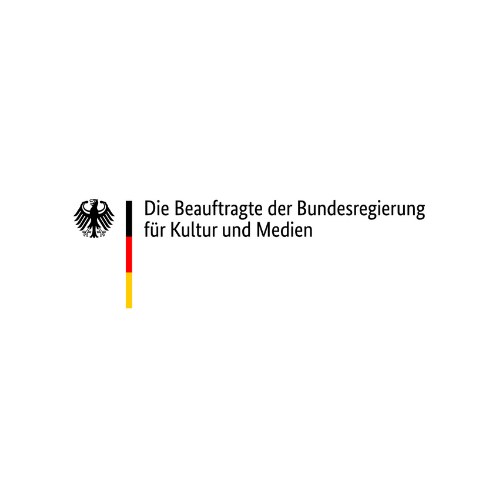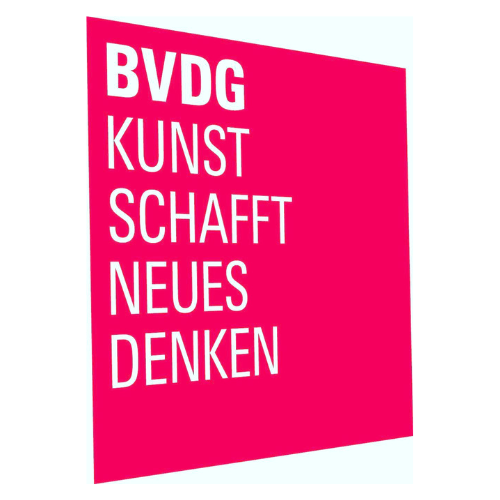re:discover
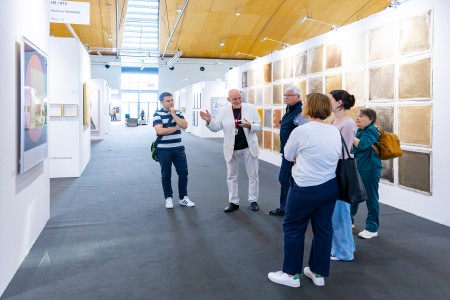
Funding program for artists in an advanced creative phase and their galleries
We are very pleased that the re:discover funding programme, which was realised for the first time at art karlsruhe 2024, will be funded by the Federal Government Commissioner for Culture and the Media (BKM) for another two years and is thus entering its second round.
Together with the Bundesverband Deutscher Galerien und Kunsthändler e.V. (BVDG) and supported by the BKM, art karlsruhe aims to make artistic work that has received insufficient recognition visible and effective again for a wider audience.
This year, 15 juried galleries will each present an artistic position within the framework of re:discover that, despite their quality and despite the continuous creation of original works of art, have not been able to achieve lasting national or international visibility, recognition, and to build up a collector base.
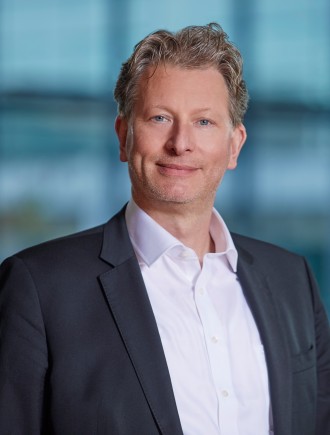
With this newly created section, we would like to enhance the qualities of art karlsruhe in a special way and establish a format that is unique at art fairs.
re:discover Artists 2025 (Author: Karlheinz Schmid)

Of course, Putin hangs oversized on the wall when Ulrich Baehr visits Russian living rooms with his paintings. Nevertheless, the artist, who has always been a critic of totalitarian systems, never celebrates those in power, but stands on the side of the people at their mercy. The subtle, unruly details reveal this. This art is highly political, without being bold. Images that inspire reflection on the world situation, but also focus on individual fates in the maelstrom of nature and culture. An oeuvre that cannot be overlooked, that has it all.
No matter how tempting the themes, whether “Lenin's Sleep” or “War in the Undergrowth”, may be to play out the pictorial possibilities of figuration: Ultimately, Baehr trumps not narratively, but painterly. In doing so, he allows himself to engage with seemingly free-dancing brushes, allowing them to dock onto informal structures. A magician of gesture. Someone who filters out of the material what the viewer then shares and integrates with their own narratives. It is completely irrelevant how all this is to be classified stylistically.
Over the past decades, countless prominent critics and theorists, including Eckart Gillen, Heinz Ohff, Eberhard Roters, Lucie Schauer and Wieland Schmied, have spanned the spectrum from Realism to Pop Art and located Ulrich Baehr artistically. However, the suspicion arises that it is impossible to do justice to the painter. Because his attitude is a thoroughly freedom-loving one.
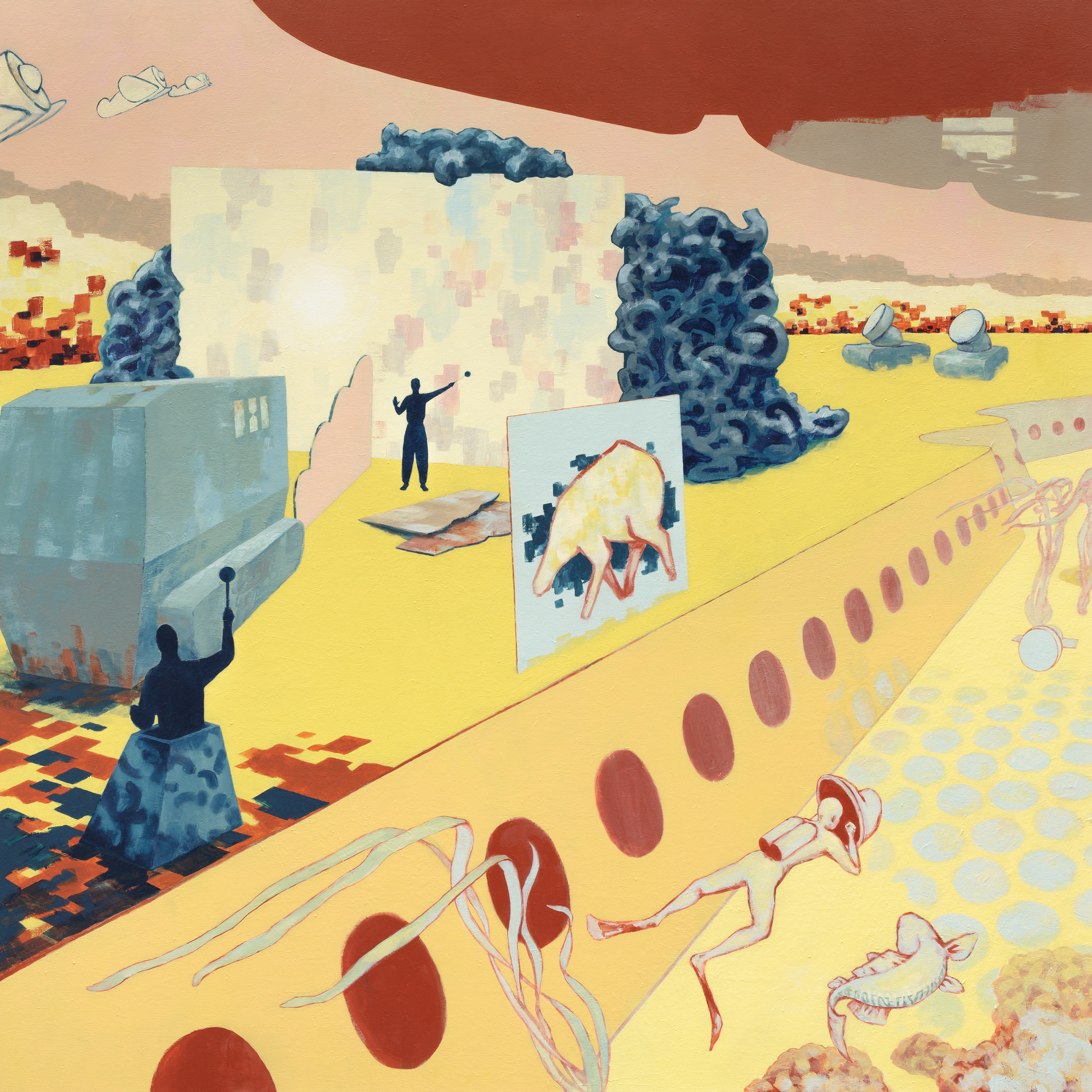
There is music in it, which is surprising. For although Hans Bohlmann once studied painting with Arno Rink in Leipzig, he devoted himself to his music for years afterwards. Now it is clear that the visual arts benefit from this, because these pictures, compositions of a matter-of-fact, reduced kind, bear witness to deliberately set rhythms, to a fine structuring of the elements. Finding the right distances, while at the same time creating the greatest possible proximity, is an art that is as high as it is necessary if the painterly message is to be received.
Bohlmann succeeds in bringing reductions of content to the canvas in the course of optimal pictorial condensation, which at all times clear the view for the essentials. Where human figures act as representatives, where pets or props from everyday life are shadowy, an artistic field of tension opens up that encourages the viewer to take a stand. The artist as moderator and game master for a competition, as life itself dictates.
Between discipline and disobedience, these pictures crave attention. And this is granted by the recipients because the artist himself remains reserved. No, Hans Bohlmann deliberately does not bring in his own emotionality. No sky-high joy, no abysmal sadness - nothing more and nothing less than an offer to use his settings to vividly write the scripts of the present.
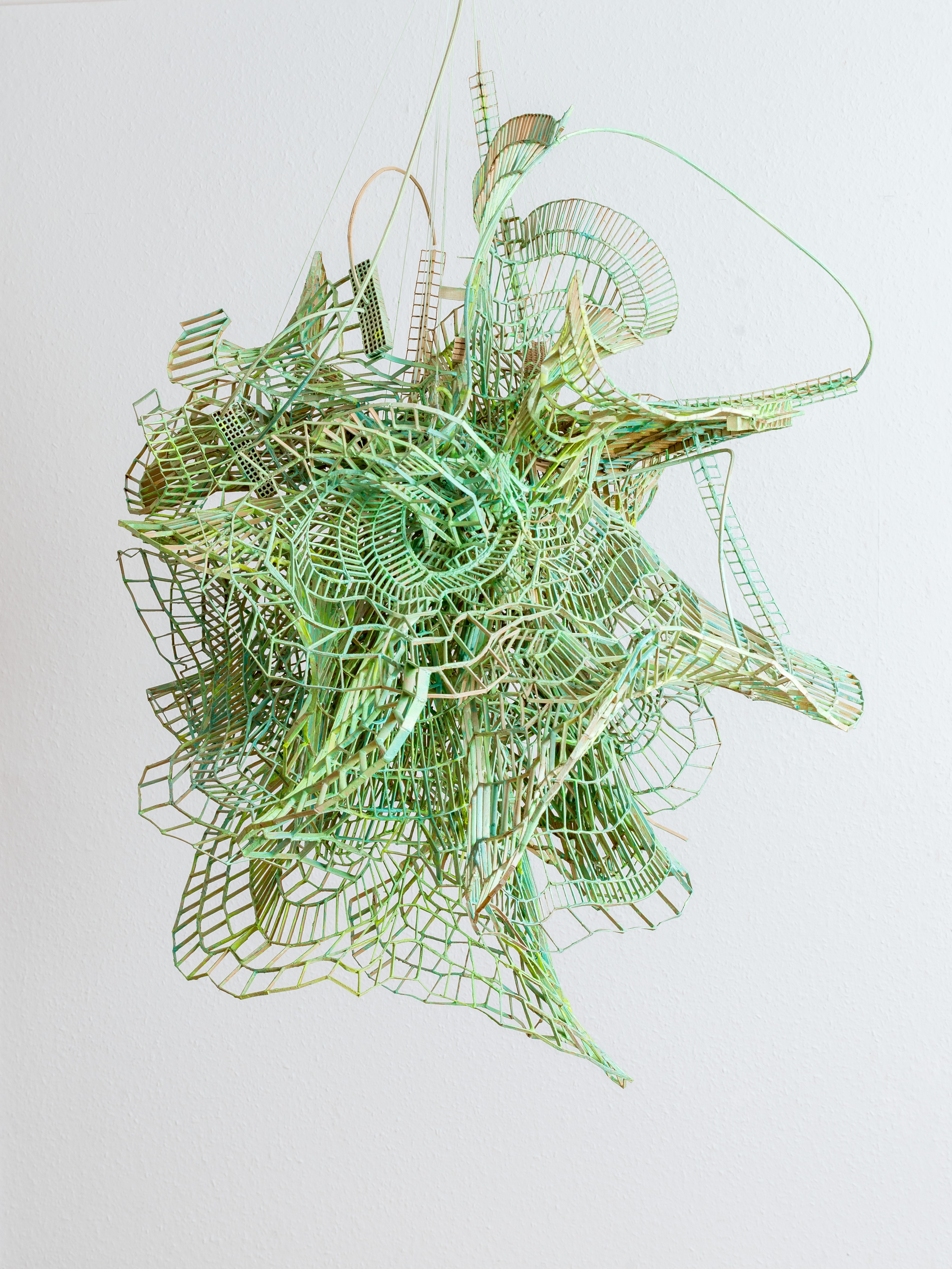
In a world shaken by crises and wars, which seems more fragile than ever before, modular systems made of paper and cardboard seem extremely appropriate. The implied transience certainly allows for energetic formal inventions, objects such as perforated and gridded spheres or self-contained wave loops. But alongside such objects, entire spatial installations are also possible, which expand in terms of form and content, which encourage the growth of supposedly natural structures - and with their telescope and cable associations advance into new spheres. Even when, filled with pain, a familiar “migraine” object smuggles itself in between.
No question: what Sabine K Braun creates with her unmistakable, three-dimensional works on paper is intellectual dynamite on the ground of a free and simultaneously threatened environment. While things are sprouting and thriving here, natural cell structures are busy multiplying, there, often in the same room, hostile vortices can already be felt that want to destroy. A thin-skinned system.
The artist works with nets, also with a double bottom. Because her beautiful and at the same time endangered objects prefer to live in a pack, often supporting each other. They are also unique cellular hybrids that draw their strength from the roots of a broadly oriented world view. What seemed to have a natural origin just a moment before the works will reveal technical or architectural connections in the very next moment and without a change of location. A change of track, a slalom of thought.
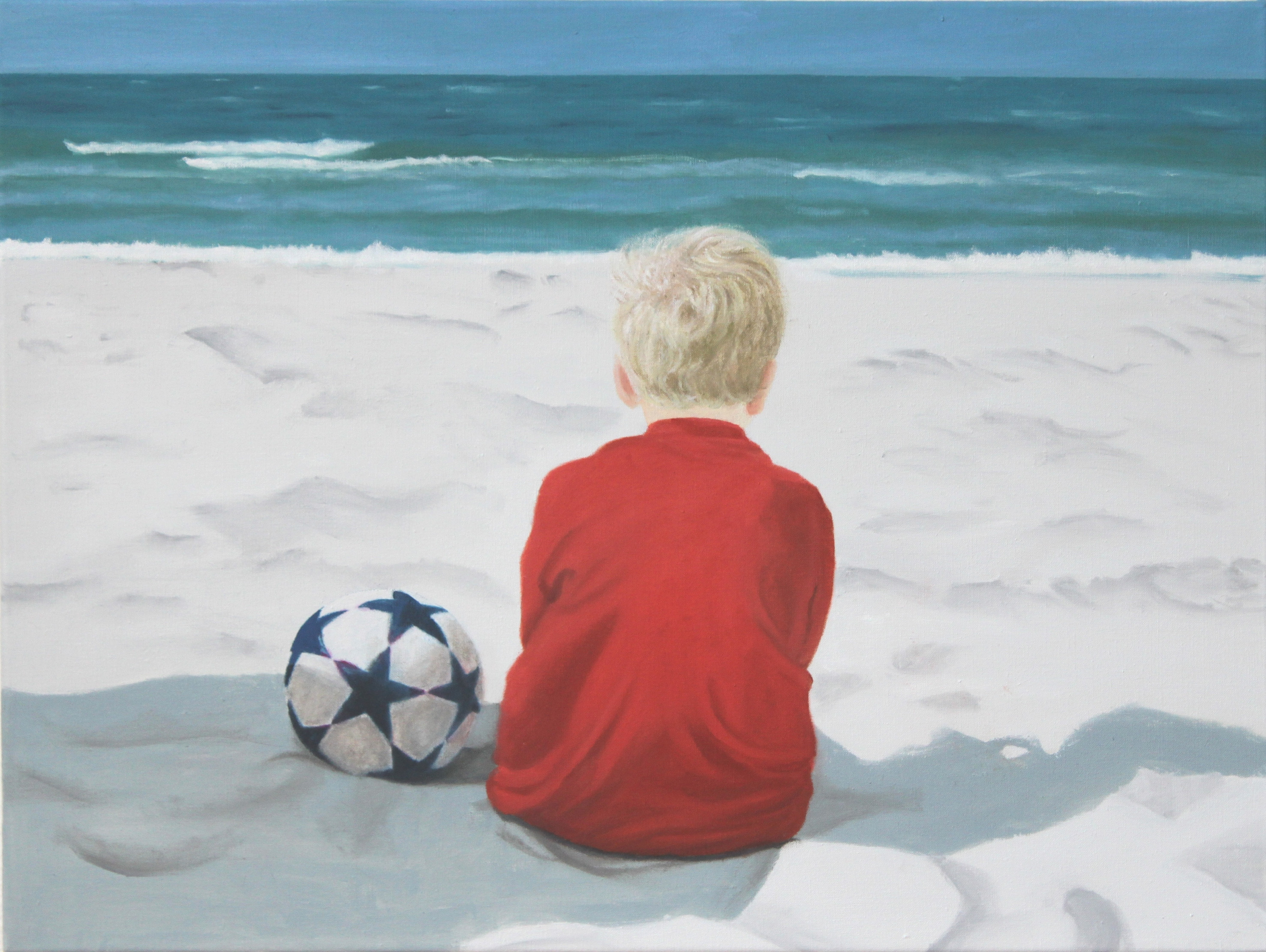
The beauty and sensuality of her motifs are interesting to her, says Andrea Eitel. She does not have a message. The simple attitude matches the profane selection of objects. A classic repertoire - from still lifes to landscapes and portraits. The painter concentrates on the object of her interest in an astonishingly simple way, without the mystery that is often found in art. It can be a flower, a dog's head or a rusty pipe.
Initially documented photographically, but then completely committed to the independent life of painting, the object is reduced to the essentials. No effects are used; no mica, no glitter. The artist remains pure even when she temporarily reveals a slight tendency towards narrative. Whether child and ball, hand and car tire or soap and tap: Andrea Eitel serves the viewer with obvious combinations, so that the mysterious may not arise.
The recipient is confronted with himself without further ado, not distracted by narratives on other levels. In the concentration on the object, a message may occasionally germinate, but before it becomes too present in the perception, it dissipates again. Just as the artist intended.

Doris Farklas' artistic work demonstrates that a background in art theory need not be an obstacle on the path to a good picture. The art historian, who is also active in teaching, knows a lot about painterly means, their effect and the scientific context - and yet she does not tend to allow her works to mutate into illustrations. Rather, she draws from the fullness of knowledge and yet always remains open to the new, i.e. to those constellations that inevitably arise from the material.
With the courage to use color and form, Farklas combines supposedly incompatible elements and marries the most contradictory components of her work. This is done with tremendous accuracy and with the highest sensitivity for what is formally necessary. Where one element of the multi-part compositions weakens, where it needs support, she provides assistance. Where another part wants to appear overconfident and/or overpowering, she dampens the effect, sets another form against it and/or intervenes with color. A bold balancing act in the field of concrete art.
Beyond phenomenology: this work implies a lot of zeitgeist without being fashionable. In a society that must learn to be mindful, to protect minorities and to value diversity, Doris Farklas' compositions can be like instructions for action. How two larger components of these often sculptural murals bend gently around a connecting block, how a heavy element can be pulled, as it were, by a lighter, faster one - these are also patterns for togetherness in a time that is challenging in many ways.
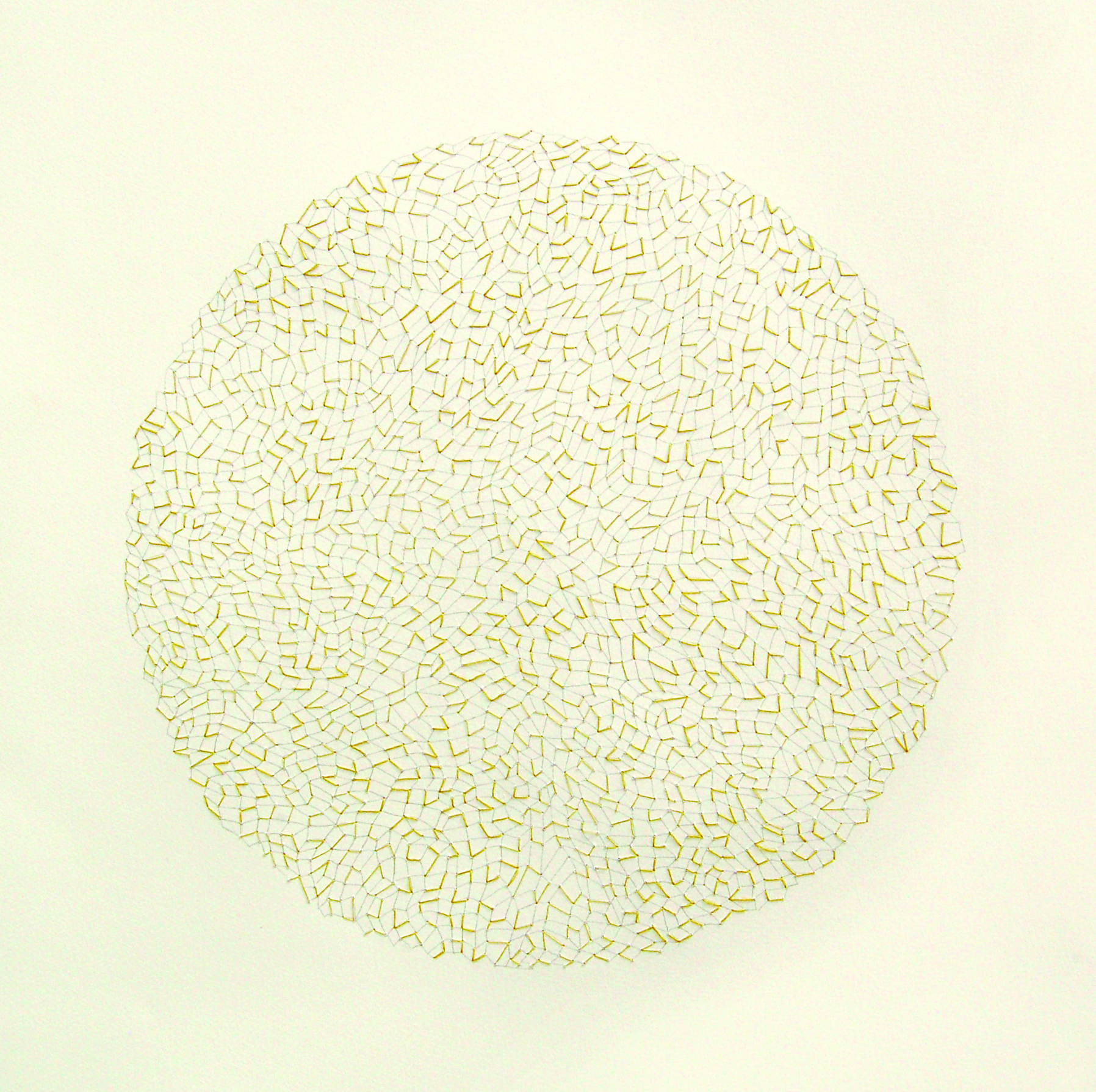
It was already apparent in her metal works from the 1980s that hair, threads and lines are extremely important to the artist. For over three decades, Niko Grindler has been creating seemingly minimalist pictures that are ultimately not so reduced. On closer inspection, it is not only about strictly composed thread arrangements, but also about the resulting light and shadow modulations and often about the substructures on the back, the various thread knots.
Naturally, this adds a dialectical level to the already philosophically charged contemplation of art. Grindler's pictures are evidence of a concept of art that is dedicated to contemplation. She works from silence for perception in silence, as her laudators like to put it, and rightly so. Whether in color or in her preferred black and white, these pictorial objects reveal the highest studio discipline, and consequently they also challenge the recipients to find fulfillment in concentration.
It cannot be claimed that this pictorial work is remote, that it is at home in other spheres. After all, it was in the Bauhaus context that textile design became socially acceptable and marketable. Above all, however, the use of thread and needle is back in fashion in this still young century, as the recent Venice Biennale impressively demonstrated.
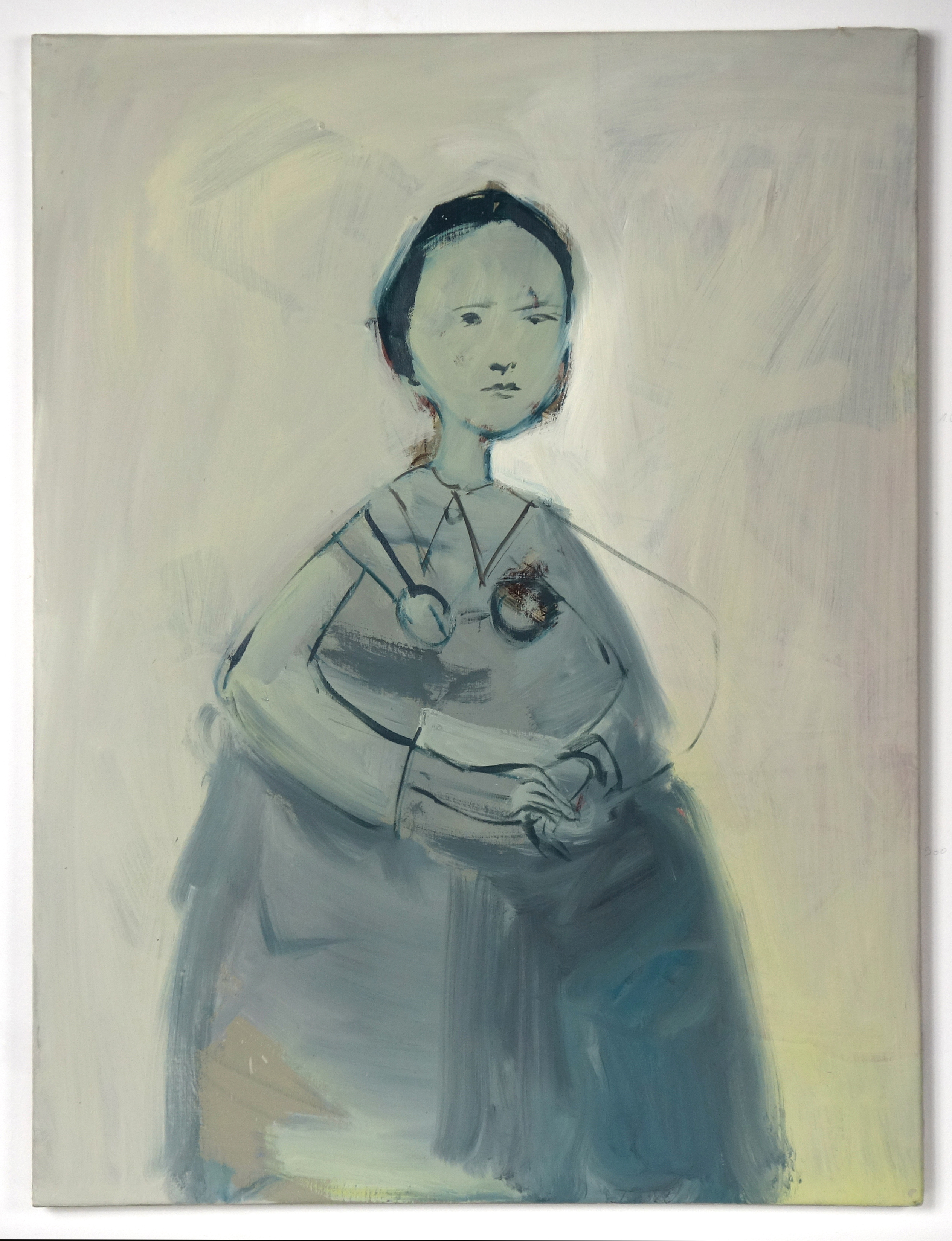
Decades ago, the legendary museum director Jean-Christophe Ammann claimed that artists are researchers by nature. Heike Lydia Grüß was on this trail from the very beginning, i.e. after her art studies in Berlin. She was particularly interested in colonialism and, thanks to old documentary photographs, undertook a journey through time to find out more about the people and circumstances. Traditions and myths continue to preoccupy her, and religious and family structures, often full of taboo subjects, are very appealing to the artist, who wants to explore in depth how everything is connected.
The painter is well aware that she sees how indigenous peoples define the role of women through the filter of Western European coloration. She attempts to free herself from the familiar grid of perception, not least thanks to her graphic and painterly capture of such themes, and does not shy away from subjectively highly charged distortions. Consequently, hostile facial features appear in some portraits. Yes, some of them are grimaces, impregnated with aggression. And yet the unmasking never tips over. Any typification is avoided, every head is different.
The individual fatefulness catapults Heike Lydia Grüß's work out of the danger zone of bold representation. She can rely on a handwriting that suggests vulnerability and appears seismographically honest. In this way, the work as a whole refuses to appear to have been cast from a single mold; it remains extremely authentic and invites intensive examination.
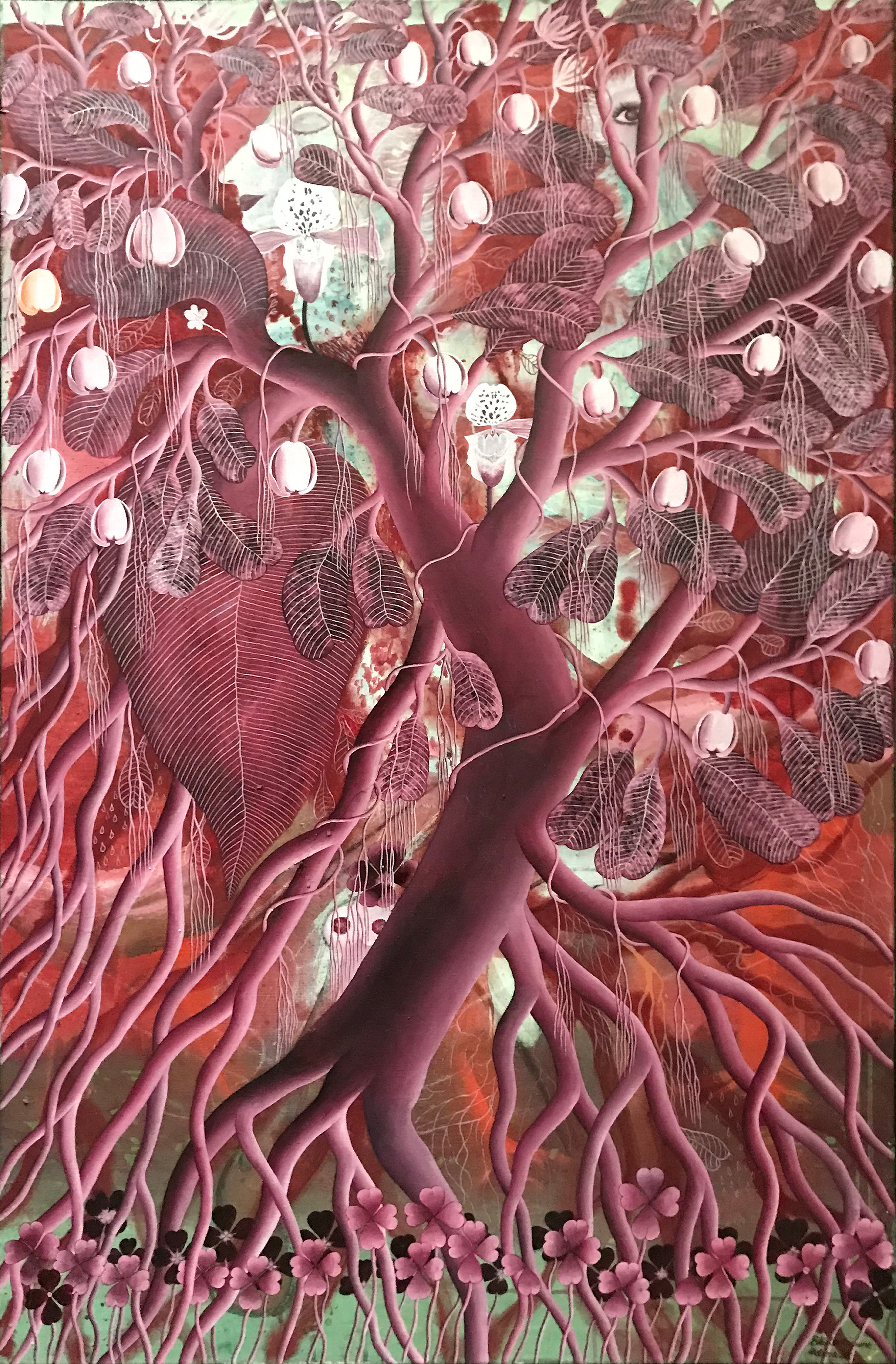
Blossom dreams, wallflowers, little happiness - it all sounds as if there is nothing to fear, as if someone has only the good, the true and the beautiful in their sights. But there are also other titles in HELMA Petrick's work, dedicated to a darkroom or a cold breath, that hint at danger. Danger in the border area. And so HELMA's painting, which venerates the poet Thomas Bernhard, which is no coincidence, wants to be located precisely at an interface.
In the middle of a fairy tale, where the abyss suddenly opens up in an idyllic setting, where subtle allegorical interpretations are possible: What the artist brings to the canvas is enchanting thanks to its poetic character, but it is also always full of indignation and anger, always bitterness. Nothing really remains untouched in this painting, because there is pain everywhere. “The flower of my anger grows wild”, said Thomas Bernhard, and the blood, wrote the poet, drips from his sun.
Her enthusiasm for Bernhard alone makes it easy to understand that although HELMA has repeatedly been associated with the legendary Berlin Realism in the past, the painter has little to do with her colleagues in the contemporary critical faction who once also reacted to the politics of the day. From the very beginning, it was important to her to venture into universal territory, to discover in translation what characterizes her pictorial work. Yes, it is about poetry in painting, on the fine line between truth and fiction.
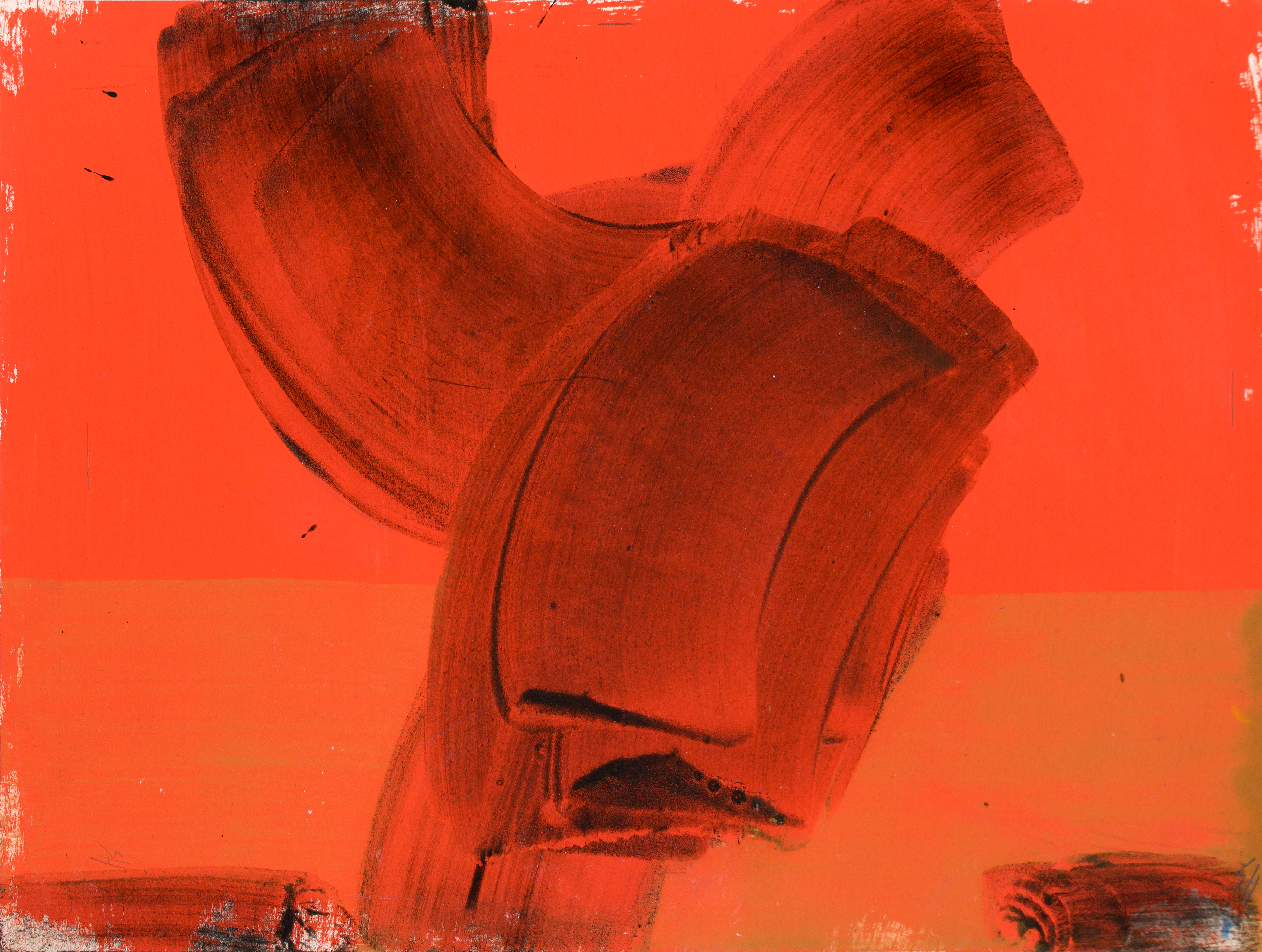
She is represented in a number of collections, has an impressive list of exhibitions to her name and yet it is precisely in the art world that she finds the kind of resistance that inspires her to make her own experiences the subject of her art. Sabine Herrmann, like many female artists from the GDR who were not immediately accepted in the West after the fall of the Wall, had to struggle with a double handicap for a long time, and so she repeatedly incorporated her disadvantaged role as a woman in the art market into her painterly work. Plausible.
It is also plausible how the painter, who is also involved in cultural politics, for example in the Verein Berliner Künstlerinnen, masterfully pulls out all the stops to express herself artistically. It is striking that she is not primarily concerned with the unmistakable signature style that is often demanded, but that she consciously takes all varieties into account. She does not shy away from either figuration or lettering, and abstraction is a particular concern of hers. She pushes this excessively, so that heavy, densely composed bar compositions sometimes refuse to be assigned to the starting point of the painting process. They give the impression of being taken from a concrete pictorial world.
Sabine Herrmann, who says she works on her surfaces “until the last square centimetre has a fully formed structure”, is one of those artists who bring inner images to the outside world and strive for harmony. The process, however expressive and quickly painted the result may appear, requires great sensitivity, as well as the willingness to fail in individual cases. Ergo risk painting.
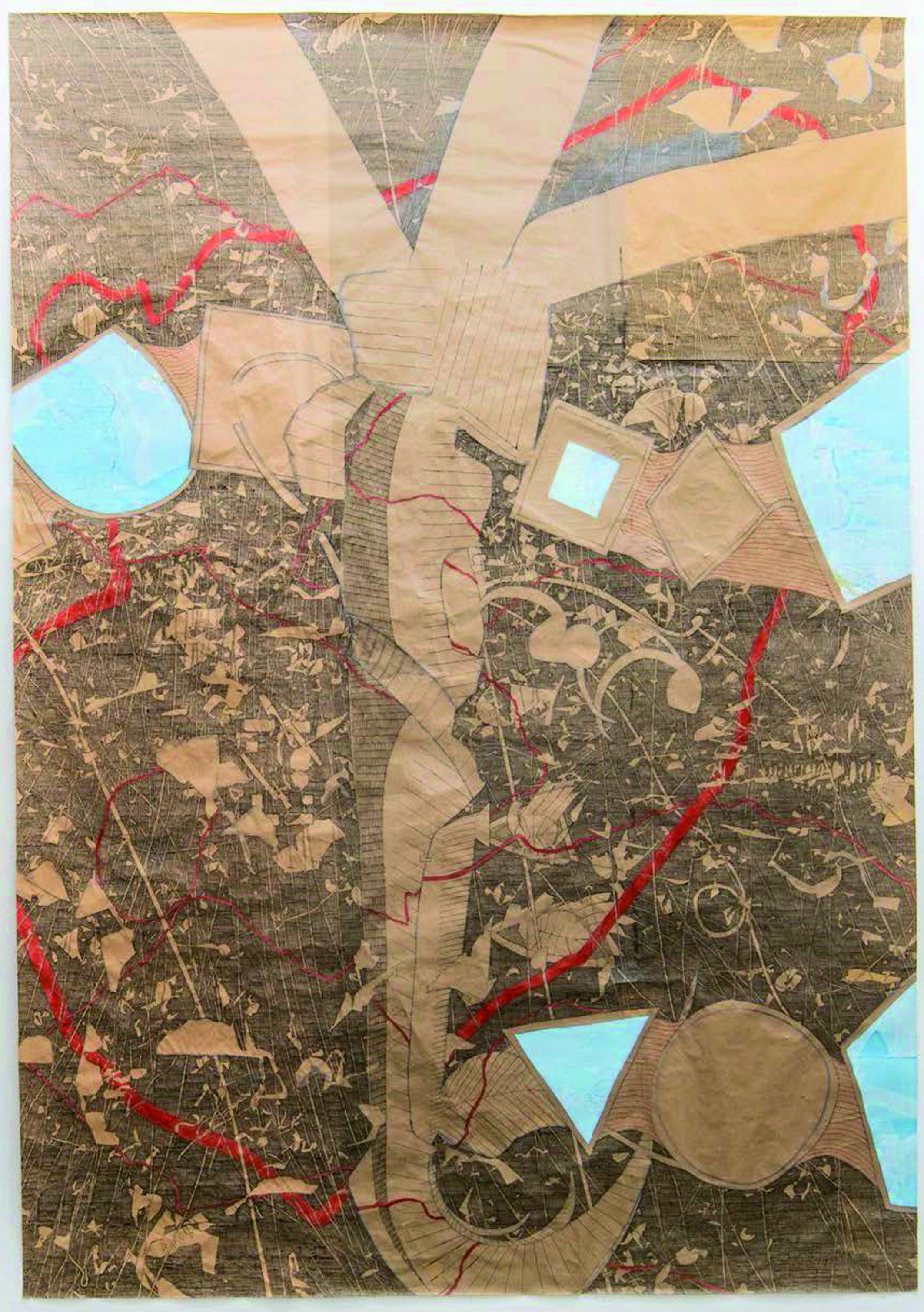
Although you might think you occasionally recognize a face or even a complete person, although real things sometimes seem to appear in the picture: no, no, Guido Kucznierz has nothing to do with reality, from a purely artistic point of view. On the contrary. The artist vehemently explains that he empties himself completely when he draws: “I try not to think about anything”. Having said that, too stupidly, all artists immediately fall offside when they try to take the easy way out.
Kucznierz, who also creates sculptures, is on a permanent quest for the unknown, for the new. Nothing should be reminiscent of the past, nothing should be created on the basis of familiar moments and objects. It is logical that critics of his pictorial worlds report on utopias. Journeys into unknown bodies are attested to, and perhaps they are also organic. However, the artist presumably does not want to know himself, but instead wants to rush to the next picture in the free zone of his own invention and conquer another planet.
The obsessive nature of the work ultimately serves to categorize this unusual work. In the freedom of form and content, where neither interpretative acrobats nor linguists have a chance, a cosmos full of adventure opens up that leads art back to its origins. Free from illustrative tasks and sustainable or otherwise oriented demands, it is allowed to be art, nothing but art.
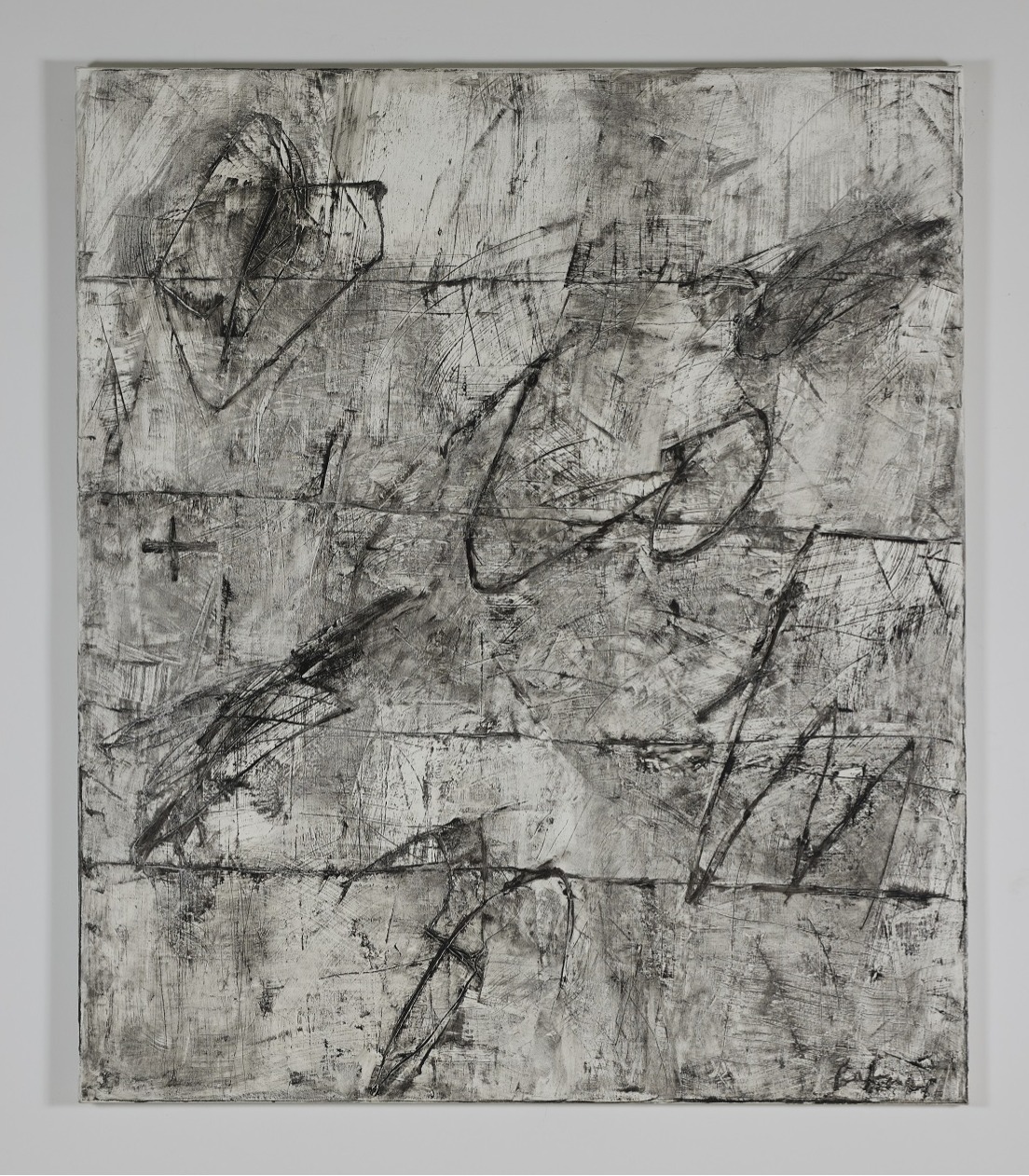
No linear development of the work, really. He jumps from theme to theme, from technique to technique, from style to style. And yet Laszlo Lakner's oeuvre is characterized by a high density. This is because the Hungarian artist, who has lived and taught in Germany for a long time, sees versatility as an opportunity for self-assertion. Biographically integrated, it quickly becomes clear that a wide variety of images can ultimately be seen as facets of an intensely experienced life.
The spectrum ranges from the critical examination of political reality in Eastern Europe to the American graffiti dream and from the exploration of the symbolism of death to the vital treatment of literary documents of the will to live. Conceptual art, pop art, realism, art informel, the search for traces - there is hardly an art movement that Laszlo Lakner has not been associated with in recent decades. With drawings, collages, oil paintings, painted cloths, photographs, written panels, bronze sculptures and many other works, he repeatedly approaches his motifs and themes from a different perspective, always ready to put everything to the artistic test.
The appropriation of image and word is also part of Lakner's repertoire. In his painterly recreation of other people's handwriting, he also approaches creatively active personalities and historical backgrounds without neglecting the radius of his own artistic presence. A virtuoso, one who inhales what contemporary history has to offer in a wide-awake manner.
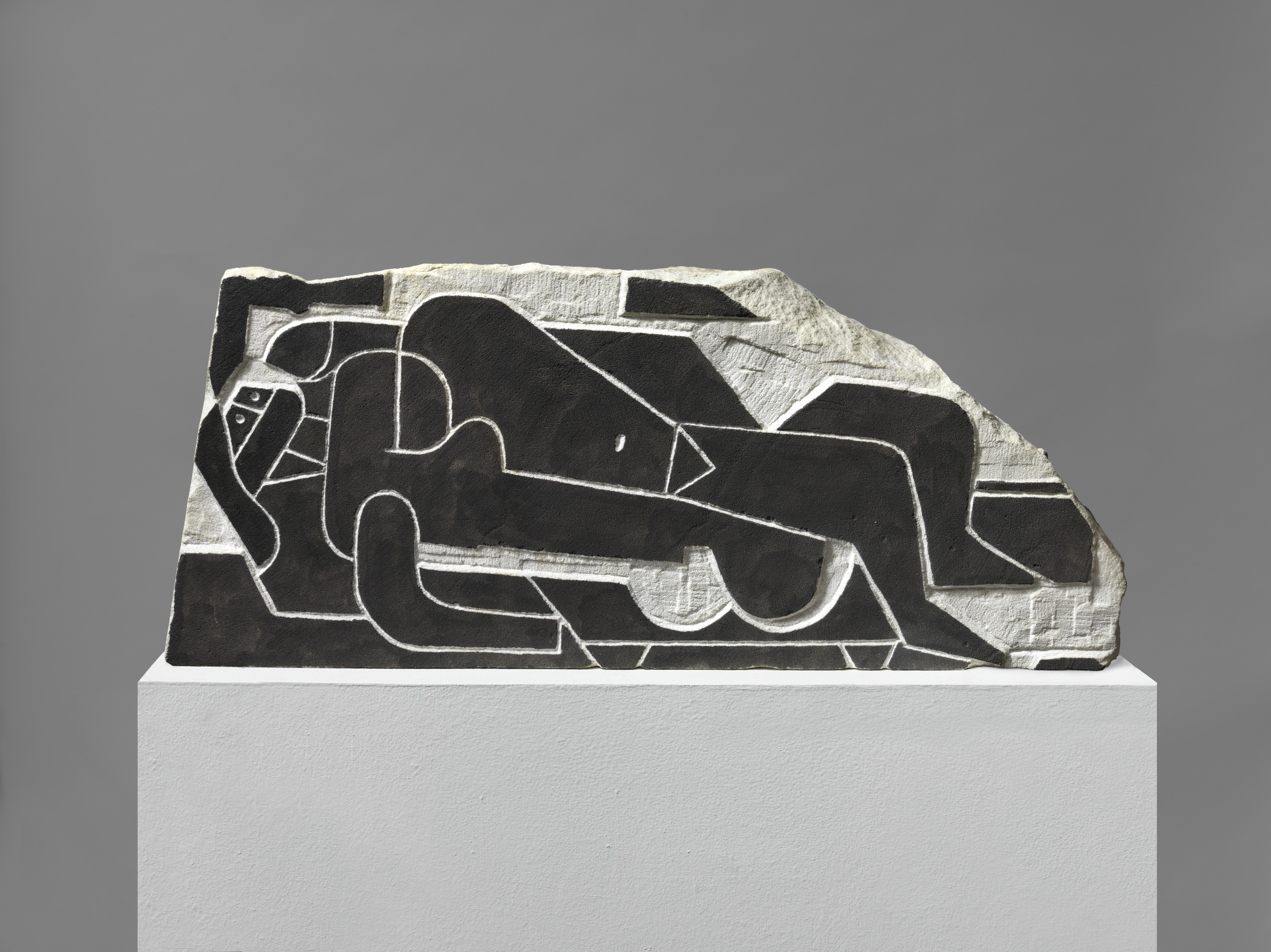
Perhaps the “Gliederpuppe”, a watercolor from 2003, is the best way to classify Wolfgang Leber's work. The figure, formed from unerringly placed lines and boldly placed areas of color, stalks confidently from right to left - and leaves no room for doubt: This is, quite bluntly, about a willingness to engage with classical modernism. As if the artist wanted to squeeze the best out of the artistic work of great colleagues such as Braque, Matisse and Picasso, Leber composes new pictorial worlds on familiar terrain.
Always with representationalism in mind, according to the analysis, the painter abstracts portraits, still lifes or rooms, for example. Sometimes a richly stocked workbench appears in oil on hardboard (2021), sometimes it is blue and not red cherries (2011), painted with oil paint on wood. Wolfgang Leber always breathes irritating details into what is supposed to be sufficiently strained, which ultimately have the power to bring the entire picture to a wider attention.
In the balancing game on the axis of color and form, objects and sculptures are also created again and again, which in individual cases also reveal that the artist, who is always striving for harmony, can sometimes react with surprising humor. “The Key to Success”, a painted iron sculpture from 2004, does not serve the often metaphorically used symbolism. Instead: The work is what it is, a formation made of iron with a real key.
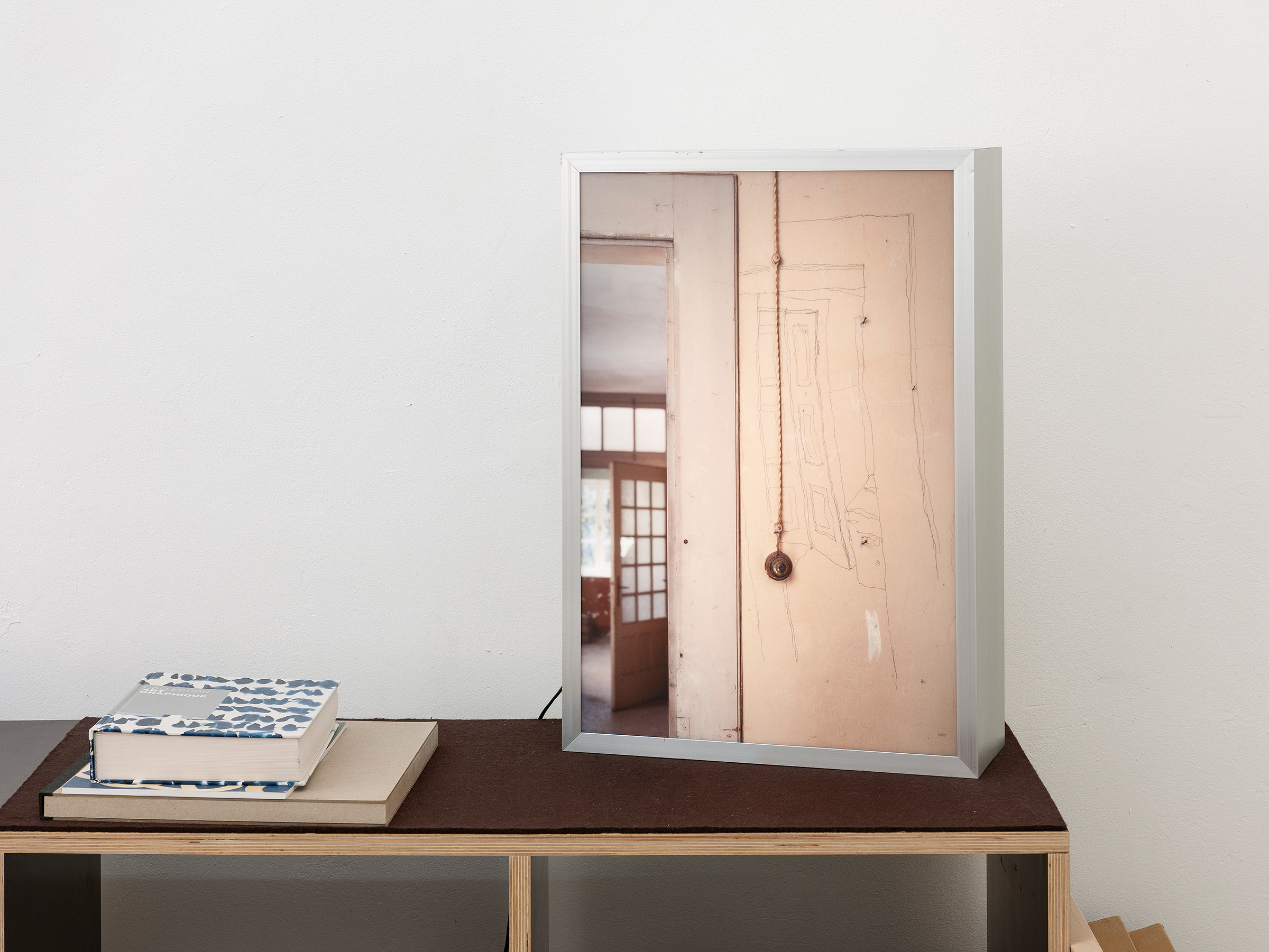
A shaky, wobbly line - that's what one of the texts about Paul Thuile, who teaches art and design at the Free University of Bozen-Bolzano, says. But when someone is both an artist and a computer scientist as well as a chicken farmer, bread baker and sausage cook, then such a jack-of-all-trades shakes his way through life quite deliberately. Thuile, who draws and photographs a lot, who likes to re-examine what he has put on paper and place it in a different context, thinks and lives on different levels. Always ready to do the role backwards, he likes to react to spaces and their history as well as their imminent or past rededication.
By focusing on the individual object, usually everyday objects, spaces can be presented in a completely new way and the associated time factor can also take on a different meaning. Visual artistry, so to speak, when a coat hanger hangs on a pole and is drawn directly onto the wall behind it with the often quoted blurred line - and all of this can then be reproduced and distributed via photography.
Thuile succeeds in taming the two- and three-dimensional, in fraternizing them, in giving them over to an expanded way of seeing. In the process of artistic work, forces are released that show the transformation from its most beautiful side. As a result, there is nothing to be sad about when transience is superimposed on ambience and architecture. A conciliatory, comforting work.
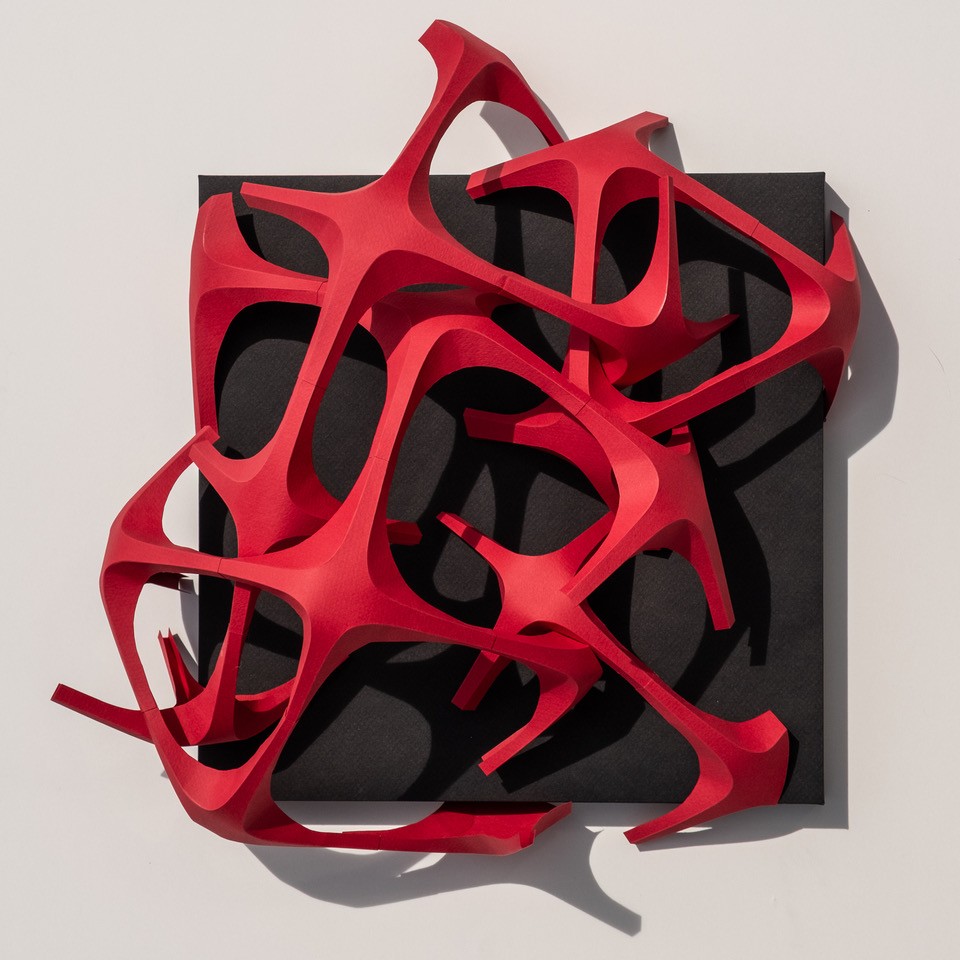
The fact that Beate Christine Winkler once studied biology before devoting herself primarily to art certainly plays a decisive role and consequently became involved with nature at an early age. Flora and fauna in all their diversity are still a central concern of the artist, and especially in a time of ecological challenges, she communicates that painting cannot be created in an arrogant and selfless way.
Of course, Beate Christine Winkler knows that it makes little sense to illustrate the urgency of the subject. Nor does she want to gloss over anything or join the chorus of repressive voices. Nature is under threat and people have a responsibility. Each in their own place. For the painter and sculptor, who makes a contribution by using sustainable means, it is about paying tribute to nature with ephemeral materials and in a seemingly meditative creative process.
Working in the silence of her own studio is, of course, followed by dialog. In contact with people, Winkler endeavors to open their eyes to the subject matter. Her artistic works, including woven works made of handmade paper, thus also serve as a transmitter in a society that needs conversation more than ever before.
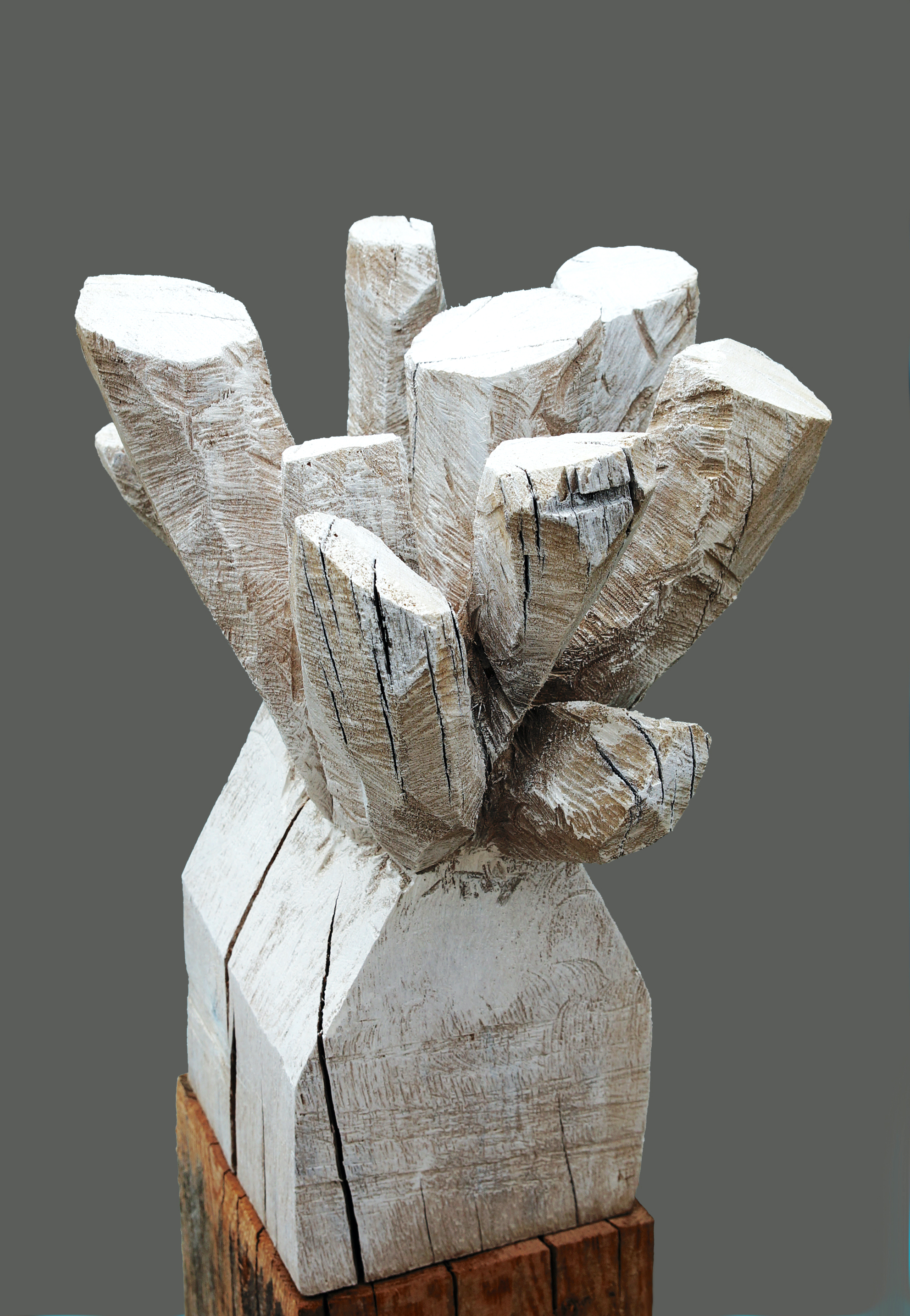
Whether placed outdoors or indoors, standing or hanging: Whatever Jo Winter brings into public or private spaces is immediately recognizable as his work. The way in which he, a biologist who completed his doctorate decades ago, draws his inspiration from his surroundings, how he lifts houses, towers or boats into abstraction, is unique.
The fact that the sculptor attracts attention with his sculptures (but also with his equally powerful drawings) has a lot to do with the way he imbues the material of his art, especially wood, with a certain archaic aura. At first glance, these works seem to have fallen out of time, but on closer inspection they appear breathtakingly contemporary. Namely black, burnt. As if a natural disaster had befallen them.
Anyone who picks up on this idea automatically ends up where the artist is sending an unmistakable message, where he is warning society of the consequences of irresponsible actions. Aren't other types of architecture and dwellings, such as boats, designed and built as homes for people? Isn't it our job to protect shelters?


